Evolution of a Service Management Framework: Spotlight at Stanford as a Use Case
Abstract
:1. Introduction
1.1. Purpose
1.2. Stanford Context
1.3. ITIL and ITSM Background
2. Technology
Spotlight Description
3. People
3.1. Exhibit Creators
3.2. Establishing a Service Team
3.3. Service Team Selection
3.4. Team Building
4. Processes
4.1. Spotlight at Stanford Service Framework
4.2. Charter
4.3. Internal Communication
4.4. External Communication
- Information on past, current, or upcoming sprints with near-term features on the development road map and timelines if possible;
- Current Spotlight issues that require workarounds;
- Newly published exhibits with demos of new or novel ways of showcasing content;
- Anything new and noteworthy, including slides or recordings of recent Spotlight presentations.
4.5. Managing Service and Product Feedback
4.6. Establishing Business Value to Define Service Team Activities
4.7. Team Process
5. Benefits and Conclusions
5.1. Service Management Impact on Ongoing Open-Source Software Maintenance and Development
5.2. Service Management Impact on Product Adoption and Success
- Stanford Libraries collaborates across campus with a number of key constituencies, including various research centers like the Center for Spatial and Textual Analysis (CESTA), the home for a team documenting the spatial history of ancient Rome [20].
- The research lead from the CESTA Rome team reached out to key staff in Stanford Libraries, with a specific interest in building a Spotlight at Stanford exhibit to showcase recent work, and to use it as a deliverable to satisfy a granting agency.
- Using the same approach as we employ for working with library curators on digital projects—especially in terms of the division of labor—we agreed to collaborate with the CESTA team and support their request for both long-term preservation of their digital images in the Stanford Digital Repository (SDR), and hosting of a Spotlight at Stanford exhibit for The Urban Legacy of Ancient Rome. This support included:
- ○
- Lightweight project management;
- ○
- Provision of digitization specifications for the CESTA team to use with the on-site imaging vendor in Rome;
- ○
- Provision of the specification and training so that the CESTA team could register content in the SDR system, and deliver fully prepped digital images to the library for accessioning into the SDR by digital library staff;
- ○
- Metadata consultation for the CESTA team so that they could create descriptive metadata to suit their project requirements; training so that the team could upload the metadata to the SDR themselves, and also enable them to perform quality control on their work;
- ○
- Further specialized metadata consultation to specify and enable CESTA team creation of properly formatted geo metadata;
- ○
- Creation of the exhibit stub for The Urban Legacy of Ancient Rome; training so the CESTA team could create their exhibit, and follow-on service support related to fine-tuning of the exhibit prior to CESTA team publication.
5.3. Spotlight Service Community
5.4. Next Steps for the Spotlight at Stanford Service
5.5. Key Takeaways for Building an IT Service in a Library or Archive
- Have a plan but be willing to change it
- ○
- When a plan is written down, particularly when this entails committee or management approval, it is hard to take a step back and course correct if something starts to go awry. It is not unheard of that what was thought to be a good idea in theory falls flat in actual practice. The key to a successful service framework is continual iteration and improvement.
- ▪
- If your proposed division of labor is not working out, regroup with your colleagues and try something new.
- ▪
- If timelines and deliverables not being consistently, get advice from a mentor, or huddle with your team to try and determine why, in a non-confrontational way.
- ▪
- If the use of your service is not growing as you anticipated, consider various methods for gathering feedback from users and target the highest priority item received from the feedback as an opportunity to change something about your service model.
- •
- Learn about IT service management and service design.
- ○
- If there are user experience designers in your organization, chances are they may have service design training. Reach out and tap into what they know and ask for their suggestions for additional resources or training opportunities.
- ○
- Check out online and in person training opportunities. One example is http://libraryjuiceacademy.com/. They currently offer a course on service design.
- ○
- Get to know people in your broader IT organization. Find out if they offer lectures or workshops in IT service management, or if they have a reading group.
- Be willing to try something new
- ○
- Be open to advice from a mentor or colleague. Maybe you have an idea for a new way to do user outreach, for example. You are not sure it will work, but no one has ever tried it before. Taking a chance will always provide useful information. Even if your new approach is not successful, perhaps in trying it you are led to an even better solution.
- A small change can have a big impact
- ○
- Let’s say you have set up a small service team. Do you have meeting agendas? Are action items and due dates recorded? Do you rotate note taking responsibilities? Sometimes implementing the basics, especially if they are new to your organization’s way of doing business, can be transformational.
- Listen to different points-of-view
- ○
- How often do you attend colleagues’ presentations and colloquiums when you have the chance to do so, either locally or at professional conferences? Here, we are referring specifically to colleagues who are the customers of your service(s).
- Share what you learn
- ○
- Seek out local, regional, and/or national opportunities to present a lightning talk, participate in a panel, or give a full presentation. Your experiences are valuable and unique, and your colleagues can benefit from them.
- ○
- Sharing failures and course corrections can help teach others who may be taking a similar path. This can also spurn dialog and encourage colleagues to talk about their failures and organizational concerns.
- Relationships matter
- ○
- Service management is collaborative work. Building and nurturing professional relationships are essential to productive interactions. How often do you interact with colleagues who are service customers?
- ○
- Does your organization offer training geared towards the improvement of customer service in general? What about communication and conflict resolution? These are important foundations to maintaining effective relationships and may be applicable to building your service framework.
Funding
Acknowledgments
Conflicts of Interest
References
- Defining Key Concepts: Products vs. Services. Available online: https://www.archives.gov/preservation/products/definitions/products-services.html (accessed on 19 December 2018).
- IT service management. Available online: https://en.wikipedia.org/wiki/IT_service_management#cite_note-1 (accessed on 19 December 2018).
- ITIL. Available online: https://en.wikipedia.org/wiki/ITIL (accessed on 19 December 2018).
- Blacklight. Available online: http://projectblacklight.org/ (accessed on 19 December 2018).
- Spotlight. Available online: http://spotlight.projectblacklight.org/ (accessed on 19 December 2018).
- Spotlight at Stanford. Available online: https://exhibits.stanford.edu/ (accessed on 19 December 2018).
- Maps of Africa: An Online Exhibit. Available online: https://exhibits.stanford.edu/maps-of-africa (accessed on 19 December 2018).
- Atlassian: JIRA Software. Available online: https://www.atlassian.com/software/jira (accessed on 19 December 2018).
- Tuckman, B.W. Developmental sequence in small groups. Psychol. Bull. 1965, 63, 384–399. [Google Scholar] [CrossRef]
- Agile Learning Labs—Workshops & Training: Certified SCRUM Product Owner. Available online: https://www.agilelearninglabs.com/workshops/certified-scrum-product-owner/ (accessed on 19 December 2018).
- Business Value Game. Available online: https://www.agile42.com/en/business-value-game/ (accessed on 19 December 2018).
- Spotlight at Stanford. Available online: https://library.stanford.edu/research/spotlight (accessed on 19 December 2018).
- What is a Scrum Master? Available online: https://www.scrum.org/resources/what-is-a-scrum-master (accessed on 19 December 2018).
- Exhibits Documentation. Available online: https://exhibits.stanford.edu/exhibits-documentation (accessed on 19 December 2018).
- Project Mirador. Available online: http://projectmirador.org/ (accessed on 23 April 2019).
- Parker Library on the Web. Available online: https://parker.stanford.edu (accessed on 19 December 2018).
- Stanford Center for Spatial and Textual Analysis. Available online: https://cesta.stanford.edu (accessed on 2 February 2019).
- The Urban Legacy of Ancient Rome. Available online: https://exhibits.stanford.edu/lanciani (accessed on 19 December 2018).
- Images of Rome. Available online: https://exhibits.stanford.edu/lanciani (accessed on 2 February 2019).
- Forma Urbis Romae Project. Available online: http://web.stanford.edu/group/spatialhistory/cgi-bin/site/project.php?id=1063 (accessed on 2 February 2019).
- Spotlight Community Wiki. Available online: https://wiki.duraspace.org/display/SPOTLIGHT (accessed on 19 December 2018).
- Spotlight Service Community Calls. Available online: https://bit.ly/2JP5edl (accessed on 19 December 2018).
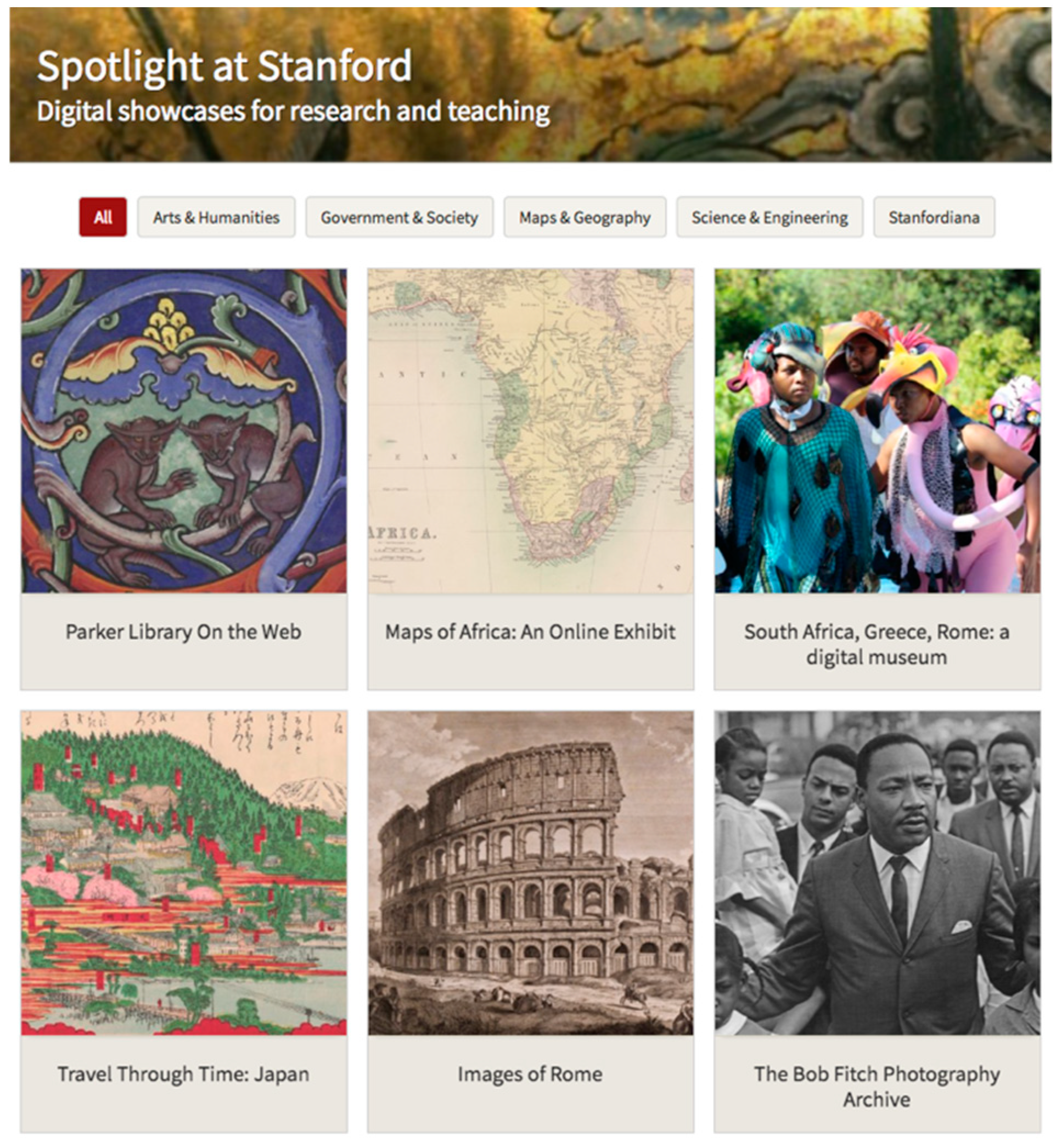
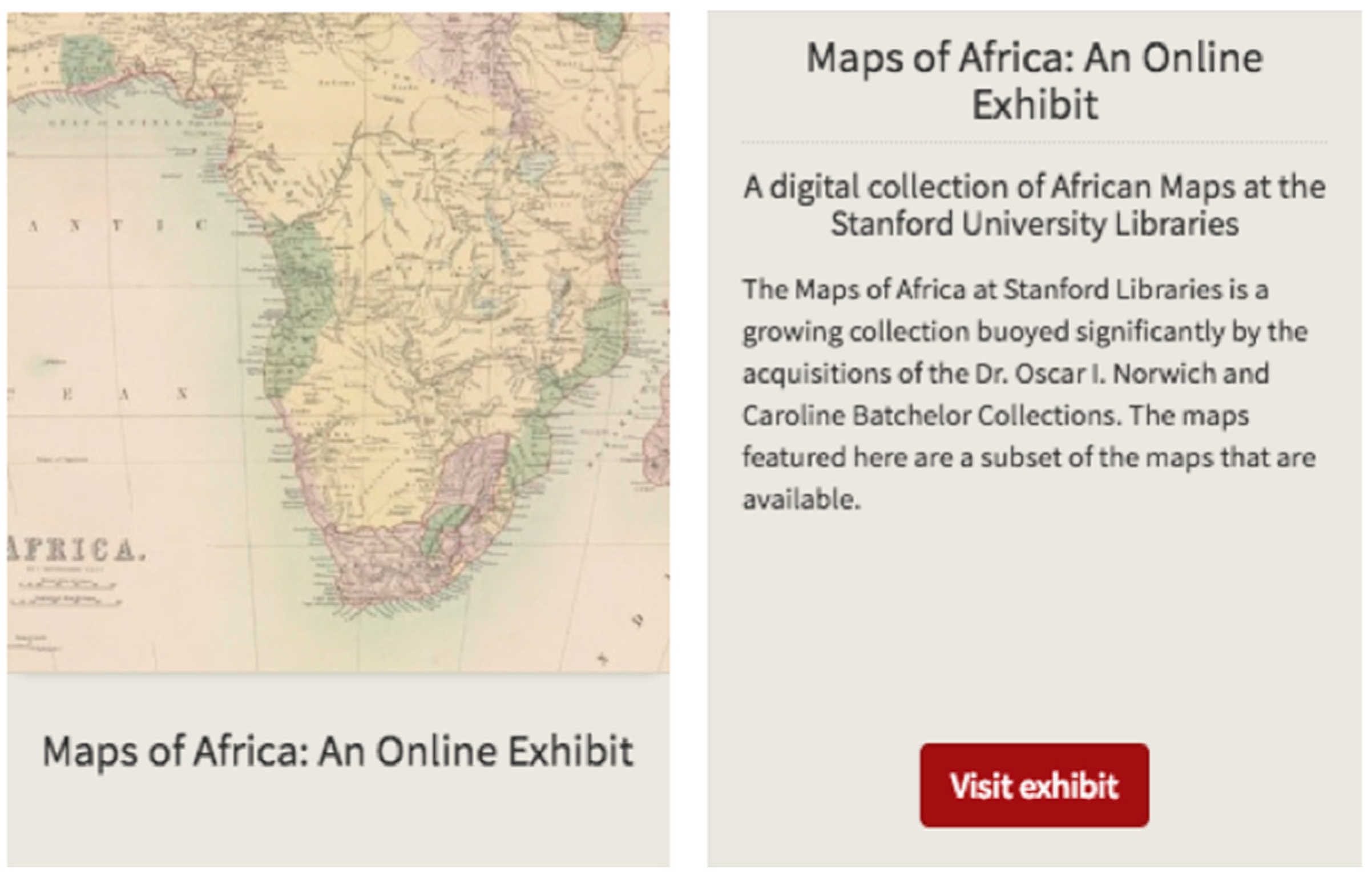
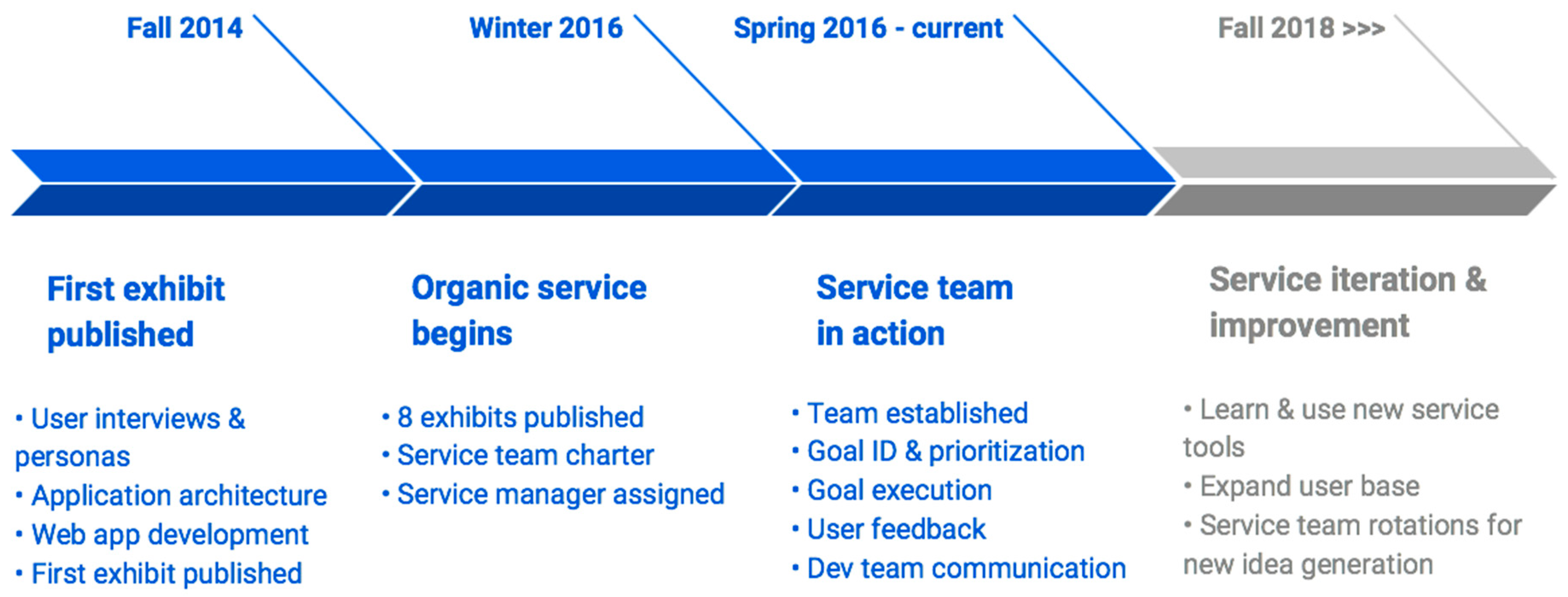
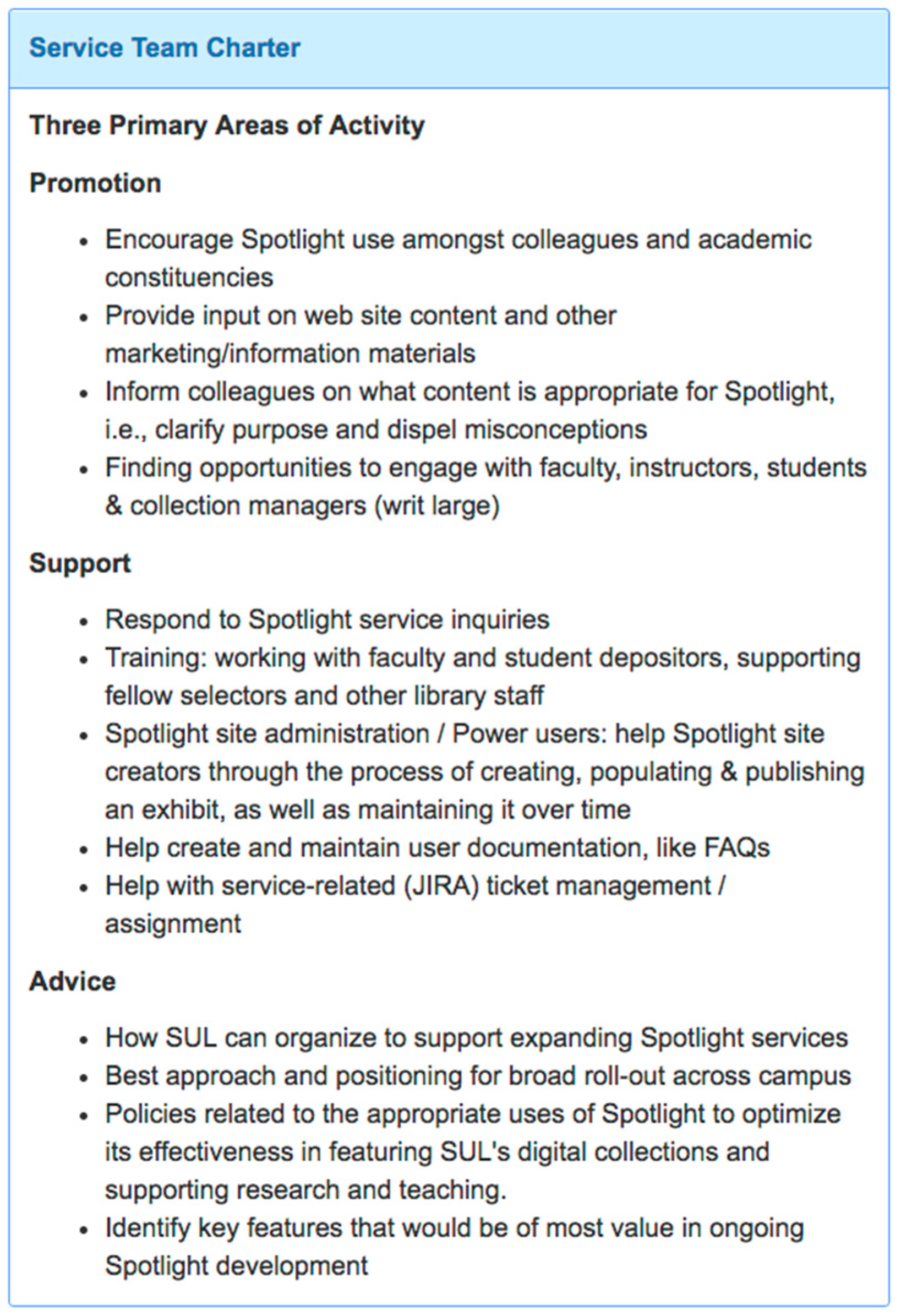
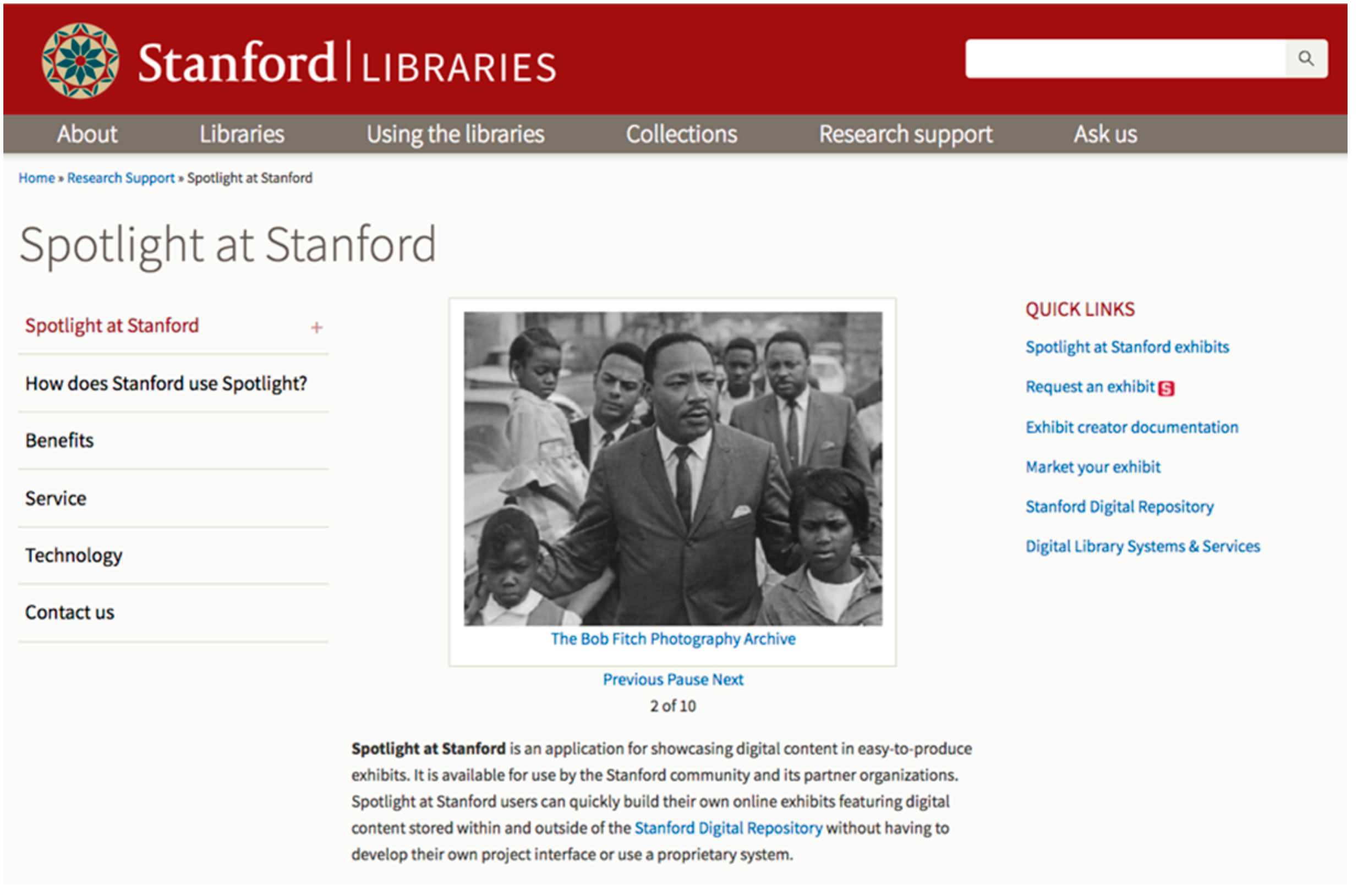
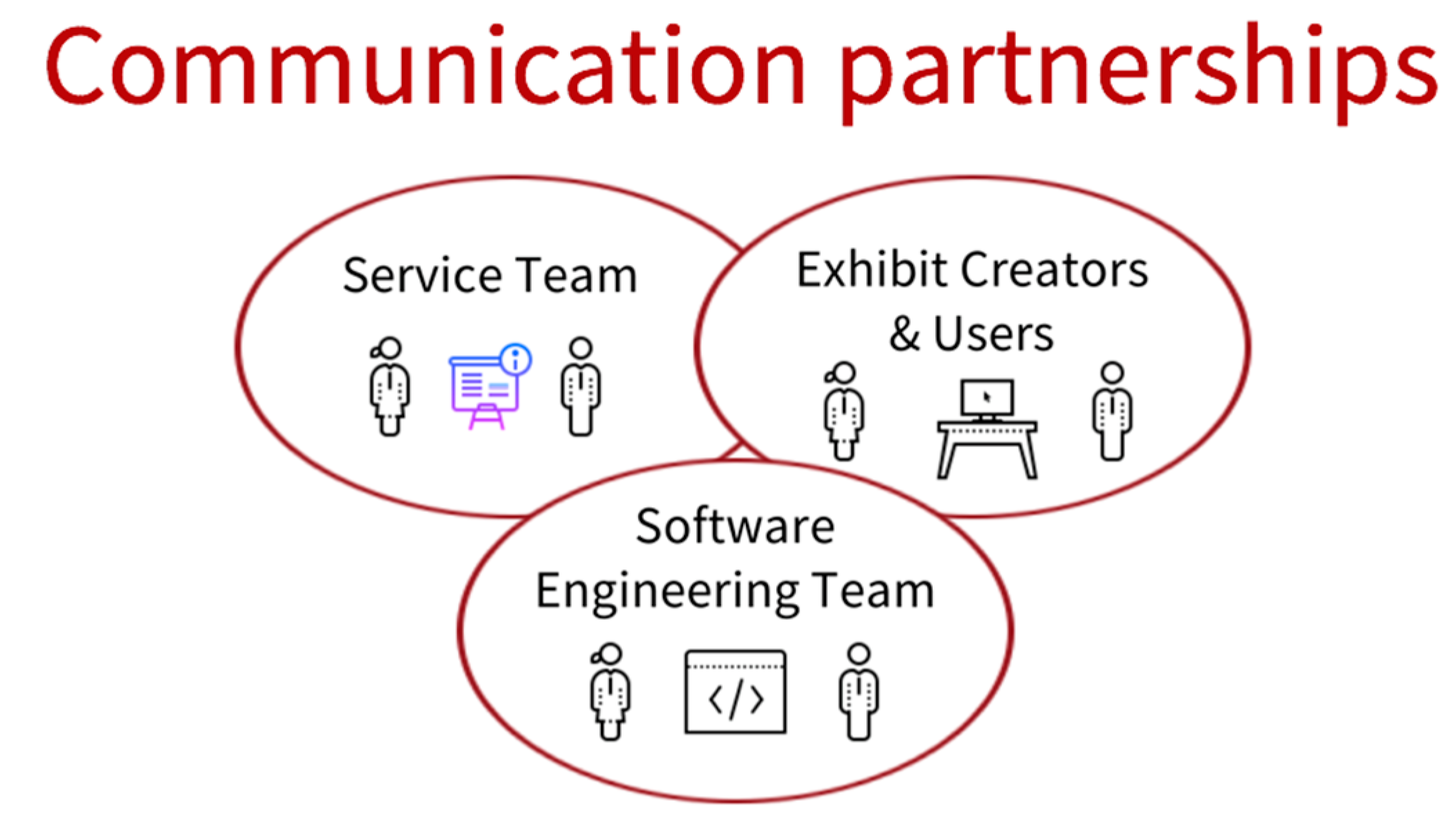
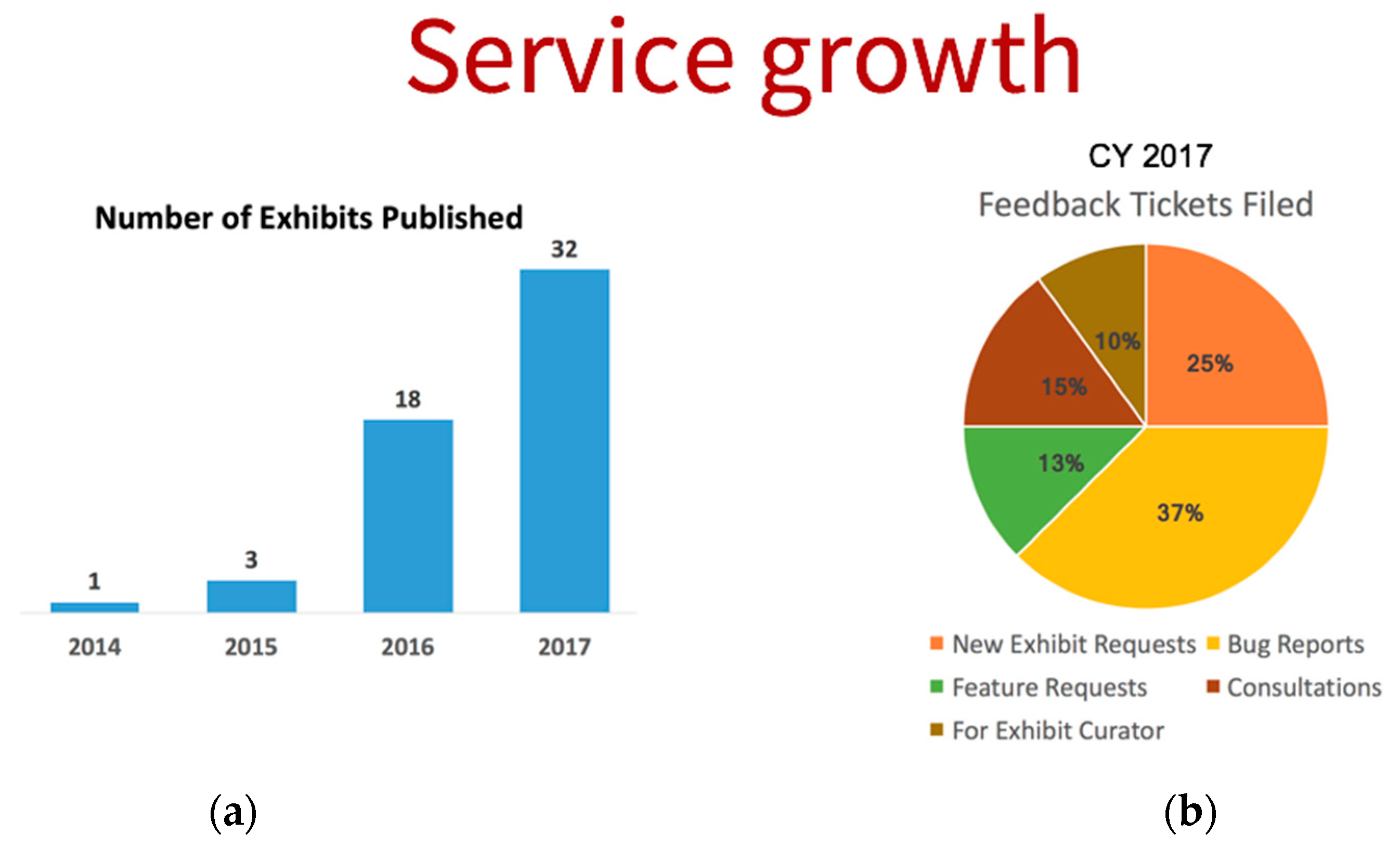
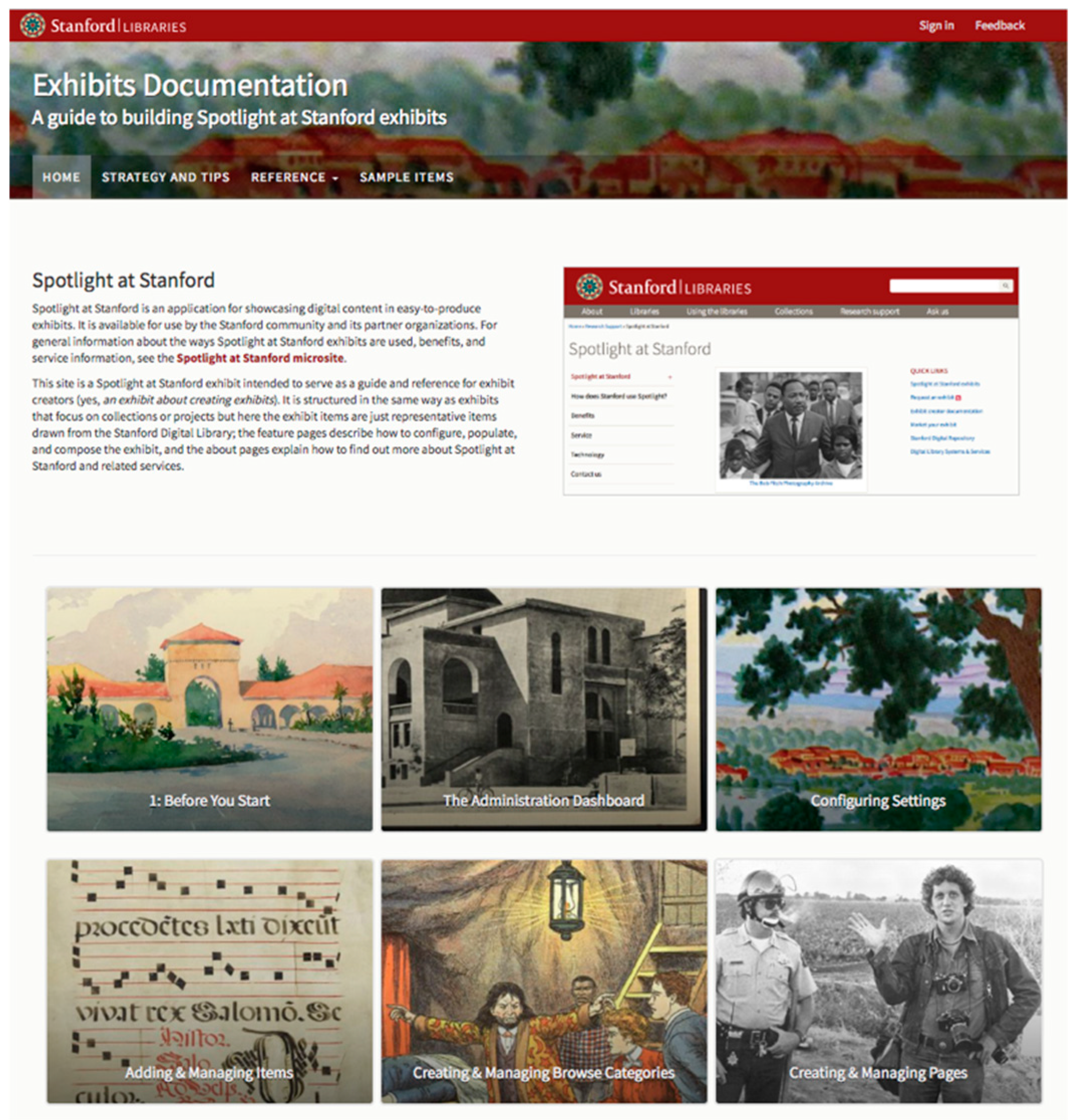
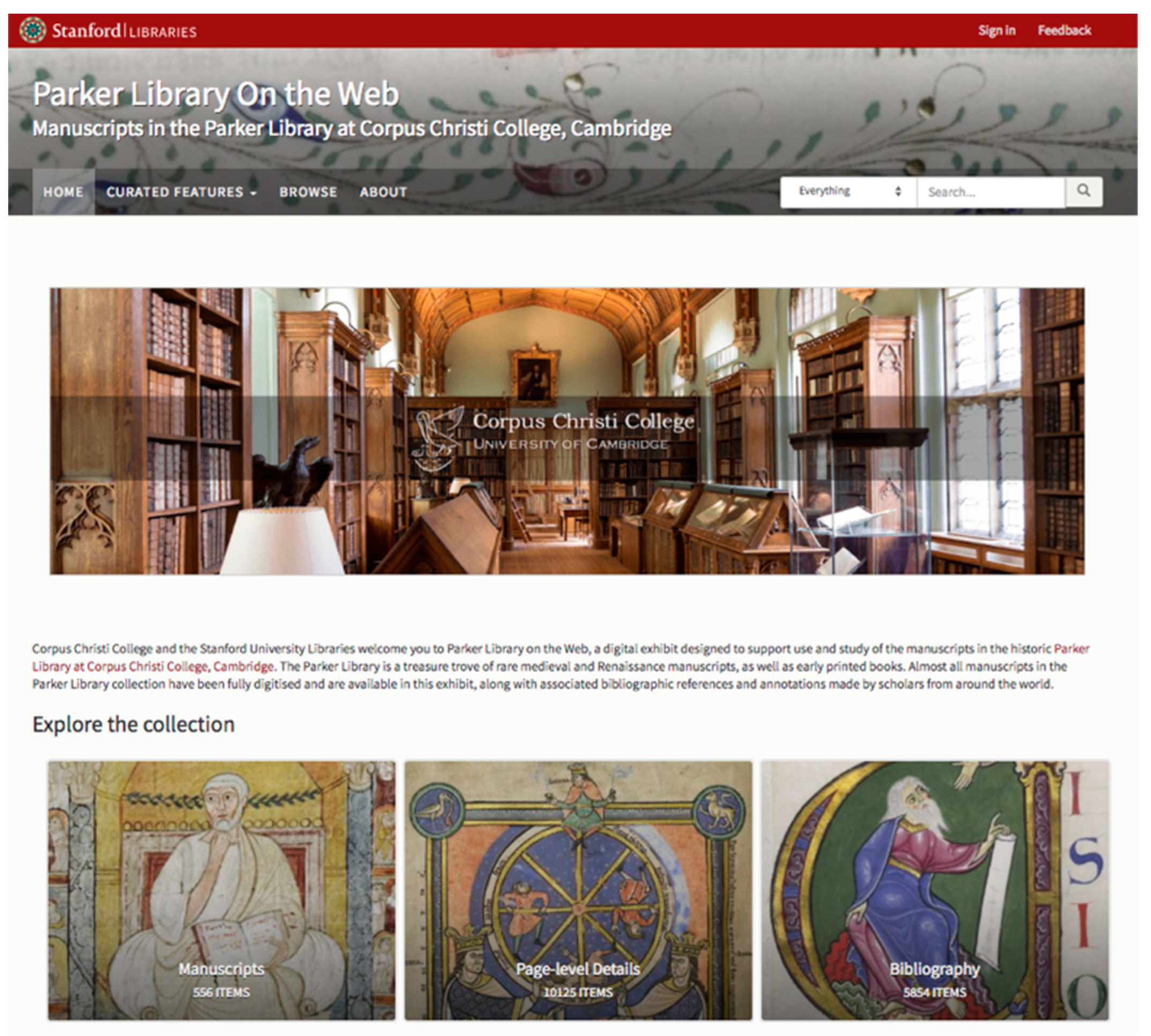
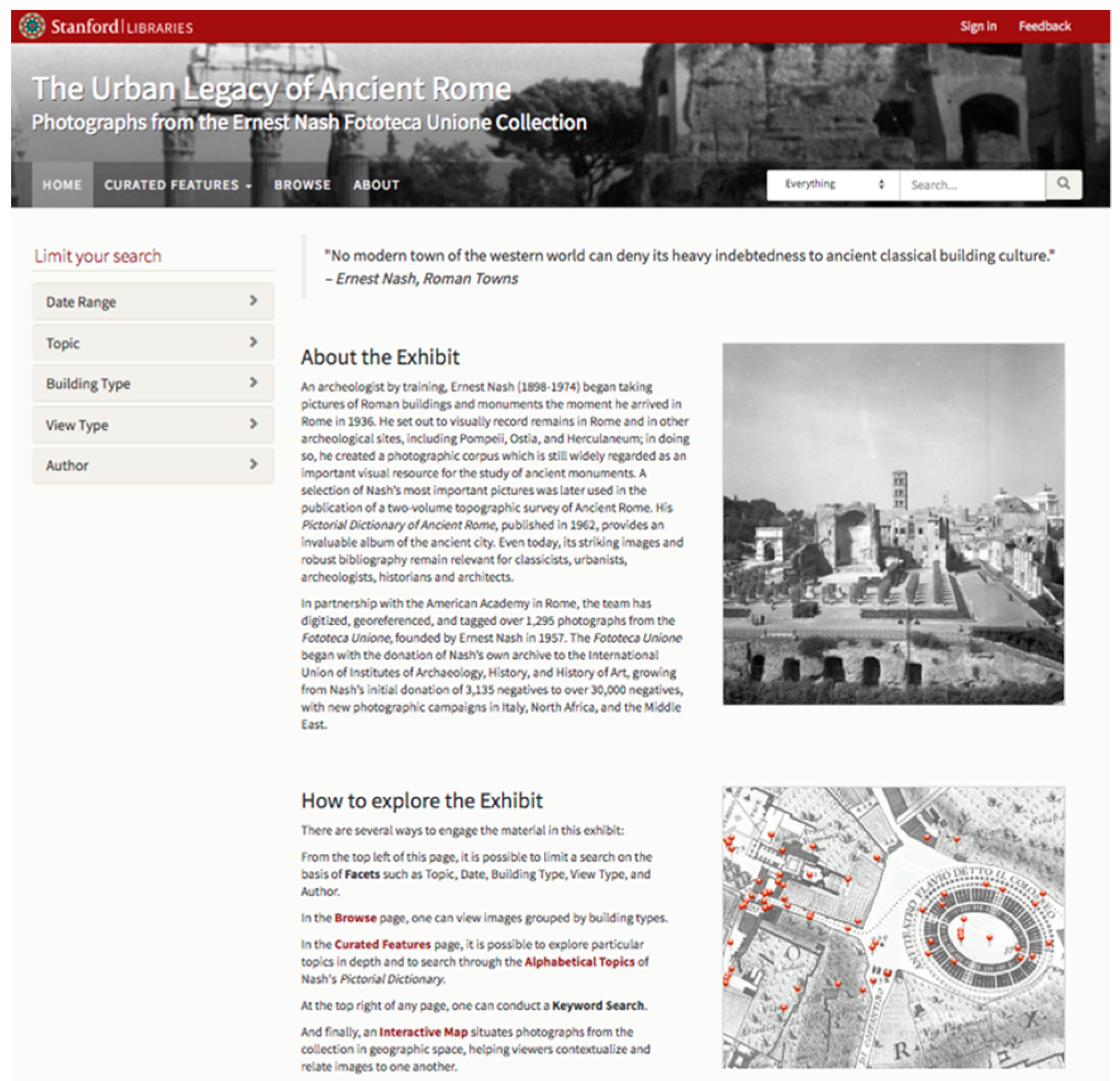
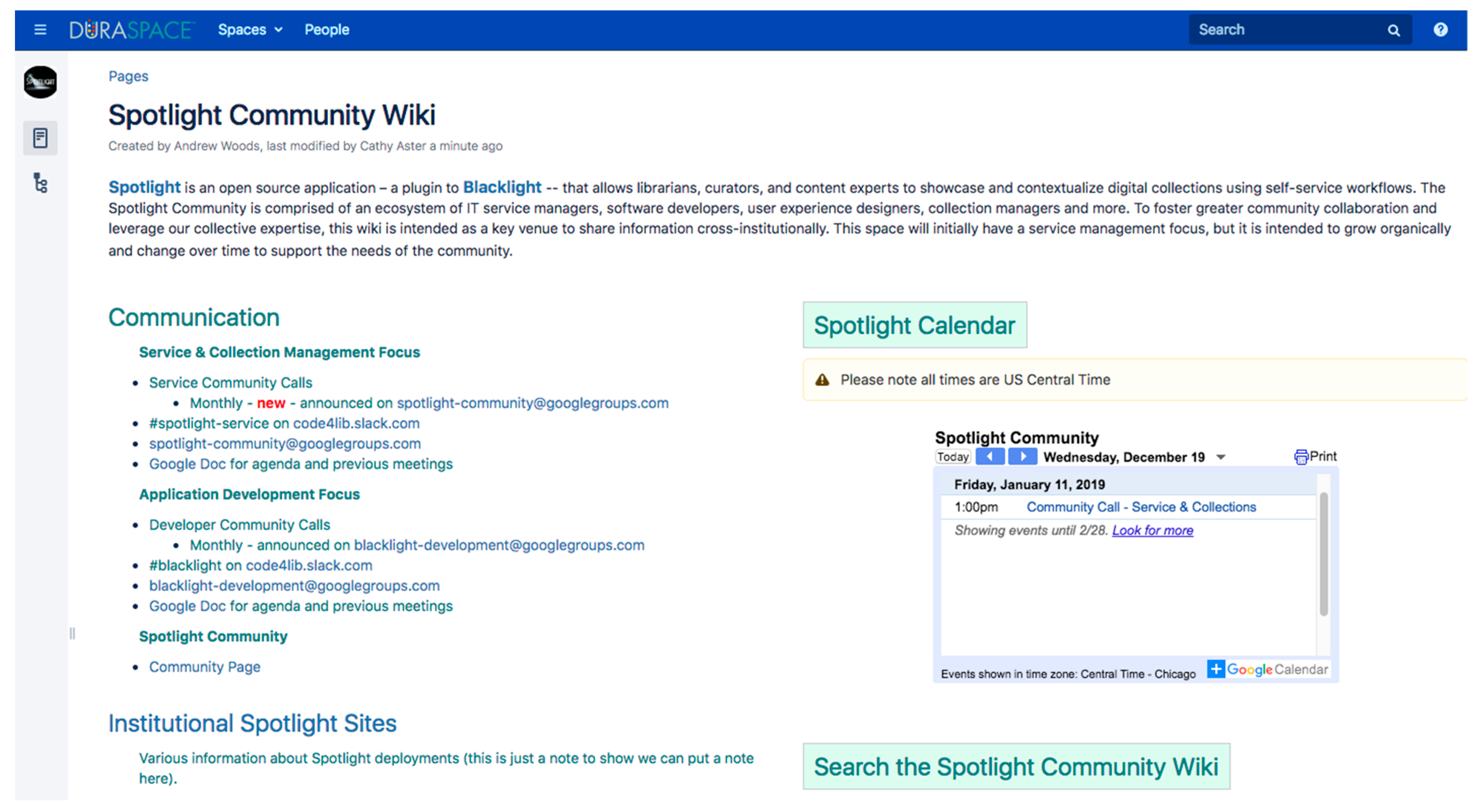
© 2019 by the author. Licensee MDPI, Basel, Switzerland. This article is an open access article distributed under the terms and conditions of the Creative Commons Attribution (CC BY) license (http://creativecommons.org/licenses/by/4.0/).
Share and Cite
Aster, C. Evolution of a Service Management Framework: Spotlight at Stanford as a Use Case. Publications 2019, 7, 28. https://doi.org/10.3390/publications7020028
Aster C. Evolution of a Service Management Framework: Spotlight at Stanford as a Use Case. Publications. 2019; 7(2):28. https://doi.org/10.3390/publications7020028
Chicago/Turabian StyleAster, Catherine. 2019. "Evolution of a Service Management Framework: Spotlight at Stanford as a Use Case" Publications 7, no. 2: 28. https://doi.org/10.3390/publications7020028
APA StyleAster, C. (2019). Evolution of a Service Management Framework: Spotlight at Stanford as a Use Case. Publications, 7(2), 28. https://doi.org/10.3390/publications7020028




